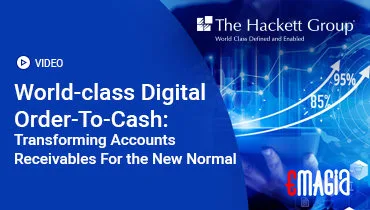In the fast-paced world of business, managing finances effectively is a top priority. For business-to-business (B2B) operations, the process of sending and receiving payments can be a complex and often slow affair. Traditional methods like paper checks are becoming relics of the past. The demand for modern, efficient, and secure b2b payments solutions has never been greater. This comprehensive guide will walk you through the landscape of B2B payment optimization, exploring why it’s crucial and how you can implement cutting-edge strategies to transform your financial workflows.
Understanding the B2B Payments Landscape: Why Manual Processes are Falling Behind
Before we can optimize, we must understand the starting point. Many businesses still rely on outdated, manual processes. This includes everything from printing and mailing paper invoices to manually reconciling payments in spreadsheets. These methods are not only tedious but are also highly susceptible to human error, delays, and fraud.
A lack of visibility into cash flow and payment status can be a major challenge. When you can’t see exactly where your money is, it’s hard to make informed decisions. This is where b2b cashflow solutions come in, offering a clearer picture of your company’s financial health.
The time and labor spent on these tasks represent a significant opportunity cost. Instead of focusing on strategic growth, your finance team is bogged down by administrative chores. This is a primary driver for the shift toward more efficient, business to business payment solutions that can save time and resources.
The Core Pillars of B2B Payment Optimization
True optimization goes beyond just adopting a new tool; it involves a holistic overhaul of your payment processes. It’s about building a robust and resilient financial system. This section will explore the key areas you need to address to achieve a truly optimized workflow.
Pillar 1: Automate B2B Payments and Workflows
At the heart of modern financial management is automation. Automated b2b payments are not just a trend; they are a necessity for any business looking to scale. This involves using technology to handle repetitive tasks that were once done by hand.
A key area for this is accounts payable (AP). AP automation systems can automatically capture invoice data, route invoices for approval, and schedule payments without any manual intervention. This dramatically speeds up the payment cycle and reduces the risk of late fees. This shift is a game-changer for b2b accounts payable automation.
The benefits extend to accounts receivable (AR) as well. You can use automation to send out payment reminders, track invoice status in real time, and automatically reconcile incoming payments. This streamlines the entire process, from invoicing to cash application, and is at the core of effective b2b payment automation and reconciliation.
Pillar 2: Embrace Digital-First Payment Methods
Paper checks are slow, expensive, and a security risk. The future is digital. Businesses are moving towards faster, more secure electronic payment methods. This includes a variety of options, each with its own advantages.
- ACH Payments: Automated Clearing House (ACH) payments are electronic fund transfers between bank accounts. They are a cost-effective and reliable option for recurring payments and are a core part of many b2b payment platforms.
- Wire Transfers: For large, time-sensitive payments, especially international ones, wire transfers offer speed and security.
- Virtual Cards: These are single-use or limited-use credit card numbers that offer enhanced security and granular control over spending. They are gaining popularity for one-time supplier payments.
- Real-Time Payments: Systems like FedNow are enabling instant, 24/7/365 payments. This is a significant step forward for cash flow management and liquidity.
Pillar 3: The Power of Centralized Platforms and Data
Manual processes often mean data is scattered across different spreadsheets, emails, and filing cabinets. This lack of a single source of truth makes it difficult to get a comprehensive view of your finances. A centralized platform, or b2b payment software, can solve this problem.
By bringing all your financial data into one system, you gain real-time visibility and powerful analytics. This allows you to track spending, monitor cash flow, and identify trends. It also simplifies the audit process and helps you stay compliant. The right b2b payments platform can act as the central hub for all your transactions.
Choosing the Right B2B Payment Solution for Your Business
With so many options on the market, selecting the right solution can be overwhelming. The key is to find a platform that meets your specific needs and integrates seamlessly with your existing systems. Consider a platform that can handle both accounts payable and accounts receivable, providing a unified experience.
Look for a solution that offers a variety of payment methods to give your suppliers and customers flexibility. A good supplier payments solution should allow for different payment types, such as ACH, virtual cards, and wire transfers, all from a single interface. This ensures that you can accommodate the preferences of all your partners.
The best platforms also offer robust reporting and analytics. This allows you to gain insights into your spending habits, identify opportunities for savings, and make data-driven decisions. The choice of a best b2b payment platform will have a lasting impact on your business’s financial health.
Key Considerations When Implementing an Automated B2B System
The transition to a new system is more than just a software installation. It’s a change in business process and culture. A smooth transition is essential to a successful implementation.
Integration with Existing Systems
Your new b2b system must integrate with your existing accounting software and enterprise resource planning (ERP) systems. This ensures a seamless flow of data, from invoice to payment to reconciliation, and prevents the need for manual data entry. Look for solutions that are “ERP-agnostic” or offer robust APIs for custom integrations.
Security and Fraud Prevention
B2B payments involve large sums of money, making security a top concern. The right platform should offer multiple layers of security, including encryption, tokenization, and multi-factor authentication. Advanced fraud detection using artificial intelligence can flag suspicious transactions in real time, helping to protect your business from financial loss. The right b2b payment solution should put security first.
Scalability
As your business grows, your payment processes will become more complex. Your chosen solution should be able to scale with you, handling increased transaction volume and new payment methods. It should be flexible enough to adapt to changing business needs and market trends.
The Future of B2B Payments: AI, Data, and Seamless Orchestration
The evolution of B2B payments is far from over. New technologies and trends are constantly emerging, promising to make the process even more efficient and intelligent. One of the most exciting areas is the use of artificial intelligence and machine learning.
AI can revolutionize tasks like cash application, automatically matching payments to invoices even when details are vague. It can also provide predictive analytics to forecast cash flow and identify potential late payments. This is the next frontier of automated b2b payments and is already being adopted by leading companies.
The concept of stripe orchestration and similar solutions is also gaining traction. This involves managing multiple payment gateways and methods from a single, unified interface. It’s about creating a flexible and resilient payment infrastructure that can adapt to any situation.
A Look at Top B2B Payment Companies and Solutions
The market for B2B payment solutions is crowded with innovators. Each company offers a unique set of features and benefits, and it’s important to understand the landscape to make an informed decision.
- Fintech Innovators: Companies like Stripe, PayPal, and Square, while often associated with B2C payments, offer robust solutions for B2B transactions as well. Their focus on user-friendly interfaces and developer-friendly APIs makes them popular choices.
- AP/AR Automation Specialists: Platforms like Bill.com (now BILL) and AvidXchange specialize in automating the procure-to-pay and order-to-cash cycles. They are ideal for businesses looking to completely overhaul their internal financial processes.
- International Payment Providers: Companies like Wise and Nium specialize in cross-border B2B transactions, offering competitive exchange rates and faster transfers than traditional banks. This is a crucial aspect for any business operating globally.
The right choice depends on your business size, industry, and specific needs. It’s not just about finding a solution; it’s about finding the right partner to help you navigate the complexities of modern finance. These b2b payments companies are at the forefront of the industry.
How Emagia’s Unified Solution Drives B2B Financial Transformation
The journey to optimized B2B payments requires a solution that goes beyond basic automation. It demands a unified platform that can intelligently handle every aspect of the order-to-cash and procure-to-pay cycles. Emagia provides this all-in-one approach, leveraging the power of AI to transform your financial operations from the ground up.
Emagia’s platform, built on cutting-edge technology, offers a seamless and integrated experience for managing your entire financial ecosystem. This isn’t just about paying invoices faster; it’s about gaining unparalleled visibility into your cash flow, reducing operational costs, and freeing up your finance team to focus on strategic growth. By providing a single source of truth for all your B2B transactions, Emagia ensures you can make smarter, faster decisions. Their solutions are designed to be an integral part of your financial future, not just a standalone tool.
Emagia’s AI-powered capabilities automate cash application and reconciliation with an accuracy that human intervention simply cannot match. It proactively identifies discrepancies, predicts payment behaviors, and optimizes collections, ensuring a healthy and predictable cash flow. This is a new era of b2b payments solutions, where technology works for you, giving you a competitive edge in a global marketplace.
Frequently Asked Questions about B2B Payment Optimization
What are the most popular B2B payment methods?
While paper checks still exist, the most popular and efficient methods are digital. This includes ACH payments, wire transfers, virtual cards, and real-time payments. These methods offer greater security, speed, and visibility, making them the preferred choice for modern businesses.
What is b2b payment automation?
B2B payment automation is the use of software and technology to streamline and digitize the entire payment workflow. This includes automating tasks such as invoice generation, routing approvals, executing payments, and reconciling transactions, all with minimal manual effort.
How can I improve my company’s B2B cash flow?
Improving cash flow starts with optimizing your payment processes. By automating accounts receivable, offering flexible payment options to customers, and using a centralized platform for real-time visibility, you can accelerate cash collection and get a clearer picture of your financial health. Solutions like factoring b2b can also help to get cash faster from invoices.
What is the difference between B2B and B2C payments?
The primary difference lies in complexity and transaction volume. B2C payments are typically smaller, one-off transactions between a business and a consumer. B2B transactions are often larger, more complex, and involve multiple stakeholders. B2B payments are also often linked to a more formal invoicing process and long-term business relationships.
What are the benefits of using a B2B payment platform?
Using a dedicated platform offers numerous benefits, including reduced manual errors, faster payment cycles, improved cash flow, enhanced security against fraud, and greater visibility into your finances. It allows your team to shift from administrative tasks to more strategic initiatives.



